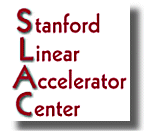| Recent
Advances in Medical Applications of Synchrotron Radiation Stanford Synchrotron Radiation Laboratory March 4-5, 2002 Program Director: Edward Rubenstein |
| Keith Hodgson |
| James Rubenstein |
| Katsuhito Yamasaki |
| Helene Elleaume |
| Giuliana Tromba |
| Wolf-Rainer Dix |
| Kazuki Hyodo |
| Barton Lane |
| William Thomlinson |
| Hiroshi Sugiyama |
| < font face="Verdana, Arial, Helvetica, sans-serif" size="2">Joseph Roberson |
| Masami Ando |
| John Kinney |
| Avraham Dilmanian |
| Dean Chapman |
| Zhong Zhong< /font> |
| Brenda Laster |
| Roman Tatchyn |
| Pau l Csonka |
|
Medical
Application of Synchrotron Radiation at Elettra:
the SYRMEP Beamline Giuliana Tromba SYRMEP Collaboration - Sincrotrone Trieste |
| In conventional
radiology the image formation is related to the absorption properties
of the sample. Image contrast is o
riginated by a variation of density,
composition or thickness of the sample and is based exclusively on
the detection of amplitude variation of the transmitted X-rays. The
main limitation of this technique is the poor enhancement of weakly
absorbing details in soft tissue. The high intensity and high transverse coherence of radiation delivered from third generation synchrotron light sources like Elettra represent unique opportunity to investigate novel X-ray imaging approaches that can be extended out also to medical radiology. These techniques are based on the observation of the phase shifts produced by the object on the incoming wave. In the energy range of 15÷25 keV, the phase shift is up to 1000 times more sensitive to variation of the structure and composition of soft biological tissues when compared to absorptio n. Therefore it is possible to reveal phase effects even if the absorption is negligible. In the diagnostic radiology energy range three different approaches for phase effect-based techniques can be considered: the PHase Contrast (PHC) radiography, the Diffraction Enhanced Imaging (DEI) and the X-ray interferometry. At Elettra a dedicate d research program is carried out at the SYRMEP beamline where the use of PHC and DEI techniques in different contexts of diagnostic radiology is studied. Recent results obtained with test objects and specimens of medical relevance are shown. Particular interest is devoted to the application of the PHC technique to breast imaging. Several samples of full mammary gland have been studied and the obtained images have been compared to conventional radiographs. PHC and DEI techniques bring significant improvements to the quality of images and do not require an increase in the delivered dose. For instance, with the PHC technique a reduction of 30-40% on the mean glandular dose has been obtained with respect to conventional images. In the near future the beamline will be upgraded and a medical facility will be built to perform in vivo clinical studies in mammography. The sketch of the new beamline and the proposed protocol of examinations will be presented. |



